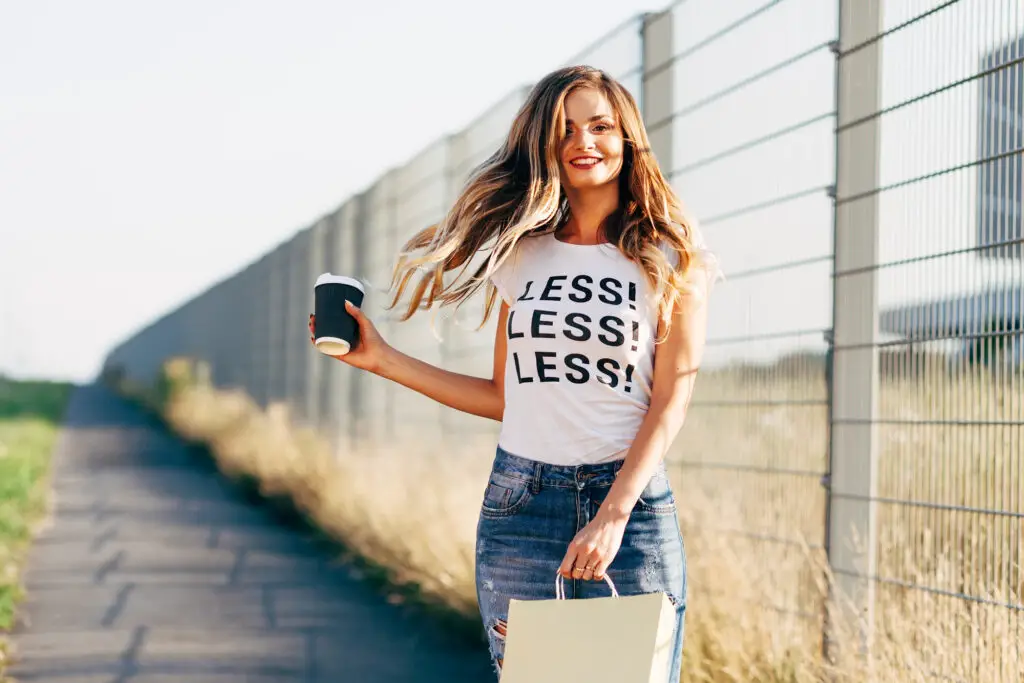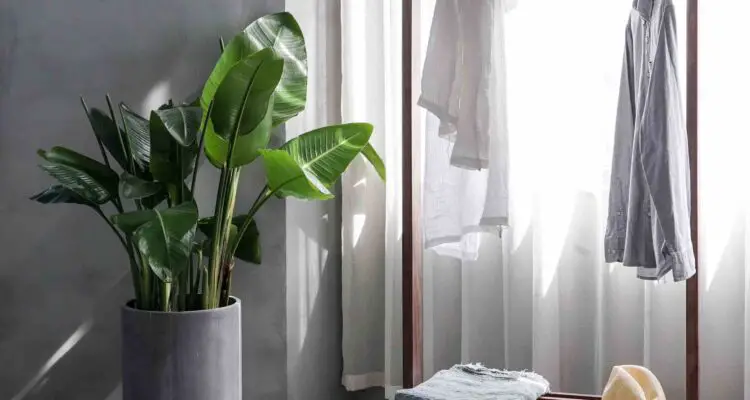Some practical and creative tips on making more sustainable fashion and clothing choices.
For a lot of shopaholics, there’s nothing quite like the feel of new fabric against your skin. Or how about the euphoria-inducing sight of shopping bags filled with piles of clothes in colorful prints and patterns?
“Clothes maketh the man,” as the old saying goes. Nothing wrong with that, except that our world today is suffering from a fashion crisis, and it’s coming at the expense of the environment.
Here are just some ways the fashion industry is contributing to the global environmental crisis:
- Waste Production: Even though almost all types of textile can be recycled, only 20 percent of clothing is actually collected or recycled—the rest ends up in landfills or are incinerated. It’s estimated that every second, the world burns up or dumps into landfills the equivalent of one garbage truck worth of clothes.
- Water Waste and Excess Consumption: Next to agriculture, the textile and garments industry is the second-largest consumer of our world’s water supply—a single pair of jeans can take as much as 7600 liters of water to produce.
- Toxic Chemicals Generation: A Greenpeace study notes that 11 common chemicals used in garments processing are toxic, carcinogenic, and have a potential to disrupt hormones.
- Water Pollution: Dyeing clothes is responsible for polluting rivers and waterways (for example, by leaching untreated wastewater containing lead, arsenic, and mercury), and is the number 2 cause of water pollution worldwide.
- Microfiber Pollution: Each year, 190,000 tons worth of microplastic fibers from clothes washing end up in our waterways and eventually into the ocean
- Greenhouse Gas Emission: The textile and garments industry releases 1.7 billion tons of carbon dioxide each year, and has an even bigger carbon footprint than the shipping or international flight industry.
One of the easiest ways to reduce your impact on the environment is by reevaluating your relationship with the clothes you wear.
If you’ve always sworn by life-giving benefits of retail therapy, the thought of having to say good-bye to your weekly clothes-shopping habit in the name of saving the environment may come as a tough pill to swallow. But it doesn’t have to be an all-or-nothing situation. Here are some ways you can make more environmentally conscious choices when it comes to the clothes you wear.
Contents
1. Buy Second-Hand

The fashion industry makes about 80 billion garments each year. That’s more than 10 times the current world population.
If you think about it, there are more than enough clothes to go around as it is that it’s mind boggling how the clothing industry is still producing clothes at the current rate it’s going.
That said, the easiest and most important step you can take to make your closet more eco-friendly is to stop buying new clothes and buy second-hand clothes instead. Not only is it good for the environment, it’s good for your wallet too, since used clothes are typically priced cheaper—even luxury designer brands can go for as little as 10 dollars or less.
Here are a couple of places where you can score great second-hand clothes and accessories:
- Physical thrift stores like Goodwill, Salvation Army, Community Aid, Thrift Store USA, and Savers
- Online thrift and consignment stores like ThredUP and Poshmark
- Neighborhood garage and yard sales
By just replacing the equivalent of 600 new clothes with used ones, we can keep 2,250 kilos’ worth of CO2 emissions from being released into the atmosphere, save 3.6 billion liters of water, and save 144 trees from being felled.
2. Slow Down

The fashion industry is producing 400 percent more clothes than it was 20 years ago. One of the reasons the fashion and clothing industry is doing so much damage to the environment is fast fashion.
Fast fashion—or the mass production of cheap, usually poor-quality clothing—aside from being environmentally destructive, also cultivates a throw-away culture, where people discard clothes and accessories worn only a handful of times just because they’re out of season or no longer have appeal.
It’s a simple equation: the more clothes we are producing, the more of the earth’s resources are being consumed, and the more pollution and waste will be generated.
Thankfully more people are becoming aware of this problematic practice and are taking steps to reverse the trend, calling themselves the slow fashion movement.
From a consumer perspective, slow fashion is being more thoughtful and intentional in making our clothing lifestyle choices. This means investing in fewer but more high-quality pieces, ditching cheap and disposable for more expensive but also longer lasting clothes—even contemplating long and hard if you have to buy an item of clothing at all.
Similarly, slow fashion brands practice mindful production, ensuring that the clothes they put out aren’t merely disposable and that the entire production process respects the environment as well as the people behind them.
Here’s a better definition of what slow fashion is, from eco textiles consultant and author Kate Fletcher, who is widely credited for coining the term in 2007:
“Slow fashion is about designing, producing, consuming and living better. Slow fashion is not time-based but quality-based (which has some time components). Slow is not the opposite of fast – there is no dualism – but a different approach in which designers, buyers, retailers and consumers are more aware of the impacts of products on workers, communities and ecosystems.”
It takes a radical change in perspective, but it isn’t impossible. Just ask celebs and A-listers like Emma Watson, Olivia Wilde, Michelle Obama, and even Joaquin Phoenix, who are all proving that looking good on the red carpet doesn’t have to come at the expense of the environment.
3. Know Your Fabric

Not all fabrics are created equal, in terms of their environmental impact. Some textile fabrics, like polyester, are made from fossil fuel and take hundreds of years to degrade. Other fabrics like cotton, although biodegradable, actually consume plenty of the environment’s resources (like water and land).
Next time you’re checking out new (or even used) clothes to buy, take a few seconds to look at the label for its material composition.
In general, avoid these:
- Acrylic, elastane (which also go by the brand names Spandex or Lycra), nylon, polyamide, and polyester: these are all derived from fossil fuels, and most are notorious for releasing microplastics into the ocean
- Viscose: although it’s plant-based (wood pulp, to be exact), it’s heavily processed with chemicals and also contributes to deforestation in some instances
Instead, go for these:
- Linen: a plant-based fabric that doesn’t take a lot of water and energy to produce and can last for up to 20 years without losing its form
- Recycled fibers (including polyester, nylon, and cotton): require less water to produce and are usually made from post-consumer waste (like plastic bottles and fishing nets) so they don’t consume additional fossil fuels—in fact, they actually remove waste from landfills and even the ocean
NOTE: Recycled plastic-based fibers can still shed microfibers into oceans, so it’s probably best to wash these items inside a special washing bag that minimizes fabric shedding and filters microfabrics so they don’t go into your wastewater
- Hemp: made from the plant of the same name, which grows fast and requires less pesticides and herbicides to grow
- Organic cotton (with emphasis on organic): doesn’t use as much toxic chemicals (from pesticides and fertilizers) as conventional cotton; to make sure it’s really organic, check for any special certifications like those from the Soil Association or Global Organic Textile Standard
- Tencel: a brand of biodegradable cellulose-based fabric, which is produced in a closed-loop process so it minimizes waste, doesn’t require as much dye, water, and energy (unlike cotton), and is sourced from wood grown from sustainably managed plantations (so it doesn’t contribute to rainforest deforestation)
Read:
11 Sustainable & Ethical Jewellery Brands to Up Your Style Game
11 Sustainable Clothing Brands for Your Minimalist Wardrobe
Eco-friendly Makeup Brands That Are Great for Your Skin (and the Planet!)
13 Sustainable Sneakers That’ll Let You Walk Your Talk
17 of the Best Organic Lipsticks You Need
4. Maximize Your Current Wardrobe

Patagonia’s CEO Lisa Williams summed it up perfectly when she said, “The most environmentally sustainable jacket is the one that’s already in your closet.”
One of the easiest ways to have a more eco-friendly closet is to stop buying more stuff and actually wear what you have on hand—which makes perfect sense, considering that the average person only wears 20 percent of the clothes in their wardrobe.
Here are other ways you can extend the life cycle of your clothes:
- Pay attention to your clothes’ care instructions and wash them according to manufacturer specifications—some items of clothing (like those with antibacterial properties) may even be worn more than once before washing
- Where possible, mend, sew, or repair torn and damaged clothes—you can even upcycle your clothes and accessories to breathe new life into them
- Sell, donate, or give away clothes that are no longer “sparking joy” to family, friends, or charity (bear in mind though that charities are already overflowing with donated clothes)
- Recycle worn or beyond-repair clothes—some brands like H&M have take-back programs that encourage customers to bring their clothes to their stores (in exchange for vouchers) so that these can in turn be recycled to make fabric for new clothes
5.Throw Your Support (and Money) Behind the Sustainable Fashion Movement

Aside from doing research on the clothes you wear, take the added step of finding out more about the brands behind them, and if they, like you, are also more concerned about the environment than they are about profit.
How do you know a clothing brand is sustainable? Here are a couple of ways to tell:
- They use organic and recycled materials.
- They’re labeled vegan or vegetarian.
- They’re transparent—check their ratings in the Fashion Transparency Index, which looks at fashion brands and retailers and ranks them based on “how much they disclose about their social and environmental policies, practices and impacts”
- They source their materials locally, or have production lines close to where their raw materials are sourced.
- They’re eco certified: A quick check on their company website will usually give you information on whether an apparel brand has sustainability certifications. Here are the most popular ones:
- B Corporation
- Bluesign
- Better Cotton Initiative
- Global Organic Textile Standard (GOTS)
- Oeko-Tex
For starters, here are 10 sustainable clothing brands to check out.
If you need more help, sustainable and ethical fashion supporter Good On You has an app that rates brands on how ethical and eco-friendly they are.
The Final Word

These five wardrobe hacks may not seem like much, if you think about how you’re just one person against the giant that is the fashion industry. But if each of us does our part in making these small but meaningful changes in our wardrobe choices, we can certainly create a big enough ripple of change.


Leave a Reply